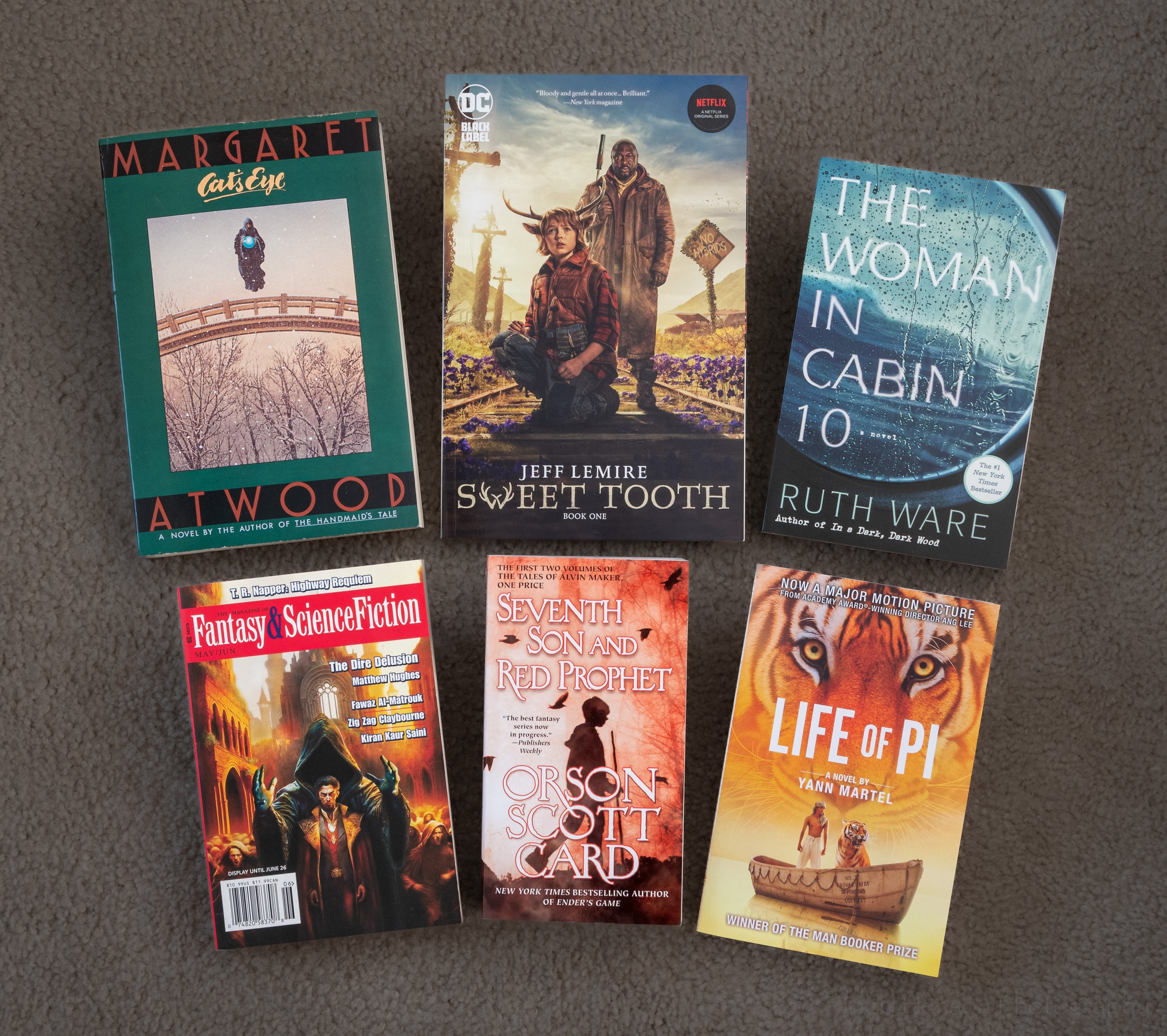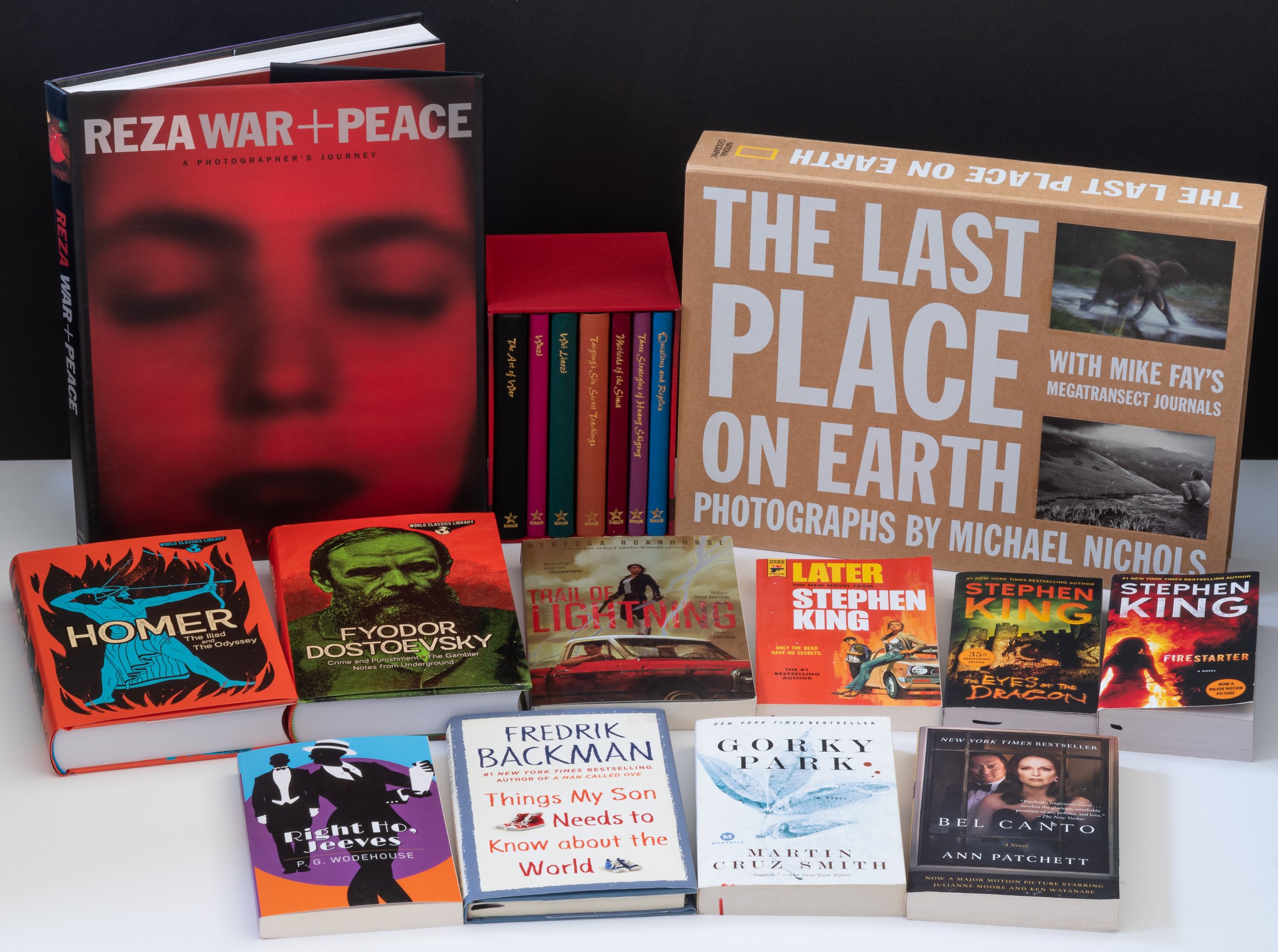Infrared image without white balance adjustment
This post contains affiliate links and I will be compensated if you make a purchase after clicking on my links. This is at no extra cost to you. I received my copy of The Red from the author through a giveaway at SF Signal (a site that is, sadly, no longer around).
Creativity exists in many different forms. I think all creatives benefit from experiencing as many forms of creativity as possible. With creative photography the photographer may craft a story or evoke an emotion with an image. It is up to the viewer to put words to the story or to experience the emotion. The viewer is a part of the creative process. Different viewers may create completely different stories from an image. Literature is similar. Authors craft the words of the story and it is up to the reader to conjure the images, emotions, sounds. Each form of creativity is similar in that there are at least two creatives at work, the one creating the original piece of art and the one experiencing the art using their own imagination.
This website is primarily about my photography. I see scenes that affect me in various ways and I attempt to create images that will allow viewers to share my experiences. I hope the viewers will experience some emotion when viewing my photos, even if it differs from my own when creating the image. If I’ve done my job correctly viewers may find stories in a few of my images. I think any photographer can improve their abilities by experiencing as many forms of creative expression as possible, to learn how other creatives express themselves, to learn other ways of expressing an emotion or telling a story. Reading great books is one way of doing this. First is the simple joy of experiencing a new world created by the author and brought to life by a synthesis of the authors words and your own imagination in how you visualize and experience the world they’ve created. Another purpose of reading is to learn about the creative process. Granted you can’t know how the author goes about their creative process, but you see the end result and that can be informative. It can show you an example of what is possible and give you something to strive for. It can provide inspiration for your own work.
So all of this is a long-winded way of saying I really enjoy reading good books. And I enjoy books of all sorts in many different genres. If I read too many books of one type I find myself craving something completely different. I’ve recently read several fantasy and more contemporary novels, so I’ve been craving a good science fiction novel. I found that in the form of Linda Nagata’s The Red: First Light. It is the first book of a trilogy, and having finished it I’m looking forward to seeing how the story progresses through the next two.
Trying not to give too much away, the story is told using first person point of view from the perspective of Lieutenant Shelley, commander of a Linked Combat Squad (LCS). It takes place in a perhaps not too distant future displaying a combination of technologies just coming into their own now, and those not yet developed. LCS gives you an idea of the sorts of technologies present, ones that allow a more cohesive team, improving communications and status updates. The first person perspective is perfect for conveying Shelley’s point of view. We see what he sees and more directly experience the technology he uses and the situations he’s put through. This perspective is even more appropriate for reasons you’ll quickly learn when you read the book, as we’re not the only ones seeing what he sees.
The title of the novel is The Red, and early on we’re presented with imagery that keeps the title in mind. The LCS uses equipment they wear to tap into the infrared feed of the angel, a semiautonomous drone used by the LCS to get a better view of the terrain. The houses in the African villages they pass through are made of red mud bricks. During an engagement an enemy is hit multiple times and “drops in a spray of brilliant red blood.” A local from one of the villages wears rust-red-and-gray camo pants. A piece of diagnostic technology “blazes with red light.” When Shelley drops to the ground to avoid being seen by the enemy he notices the slick red dirt, wet from recent rain. The use of red imagery is beautifully done. Red occurs often in the beginning, but not so often it distracts. It’s just often enough to remind us red will play an important role in the story. It reminded me of the use of green in the movie, The Matrix. If you aren’t paying attention you might never notice until someone mentions it to you. If not for the book’s title I may not have noticed. The use of red built tension. I wanted to know what The Red was and how it related to the story. We do eventually learn this, but I’ll leave that for you discover when you read the book. It’s worth the read.
This was only a short taste of The Red. I don’t want to reveal too much and risk taking away from the enjoyment of experiencing the events as they unfold, of learning what the Red is and how it will affect Shelley and the other characters in the story. As short as this description was I hope it was enough to entice you to pick up a copy and give it a try. I was lucky enough to win my signed copy of The Red (thanks, Linda!) through a giveaway at SF Signal (as mentioned above, unfortunately this site is no longer active). This was my first exposure to Linda Nagata’s work, though I had heard of her through positive reviews of The Bohr Maker years ago. It’s a book that’s been on my far too long and always growing to-be-read list. I’ve now purchased a copy of that as well as the other three books in The Nanotech Succession (Tech-Heaven, Deception Well, and Vast), and the next two books in the The Red series: The Trials and Going Dark. If you’d like to learn more about Linda Nagata check out her website at MythicIsland.com.
UPDATE: I’ve finished reading the The Trials and Going Dark, the last two books in The Red Trilogy, and I very much enjoyed them both. The story definitely takes a different turn in each novel, further exploring some of the issues first presented in The Red: First Light. I look forward to the next book I read by Linda Nagata, though which that will be I don’t yet know.
Do you enjoy these posts?
Sign up to receive periodic emails with updates and thoughts. Don’t worry, I won’t spam you. And please consider purchasing artwork or products from my online store, and using my affiliate links in the sidebar to the right when shopping online.
I appreciate your support!
















